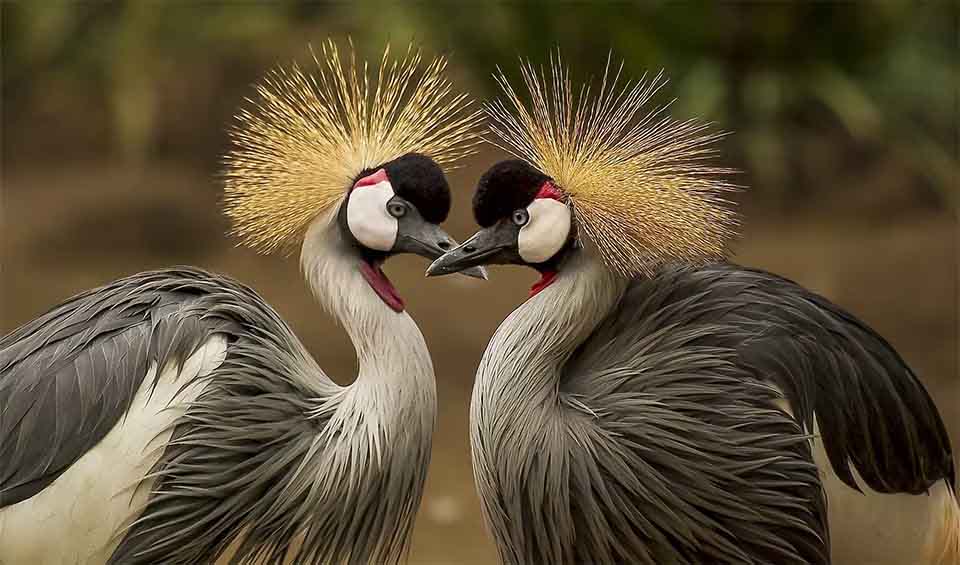The Grey Crowned Crane, with its majestic presence and striking appearance, is truly a sight to behold. Adorned with a crown of golden feathers atop its head, this bird stands out against the backdrop of its native grasslands and wetlands in eastern and southern Africa. Its grey body is complemented by the vibrant hues of its plumage, creating a captivating spectacle as it moves gracefully through its habitat.
One of the most remarkable features of the Grey Crowned Crane is its long and slender neck, which it uses with remarkable agility and poise. Whether foraging for food or engaging in its elaborate courtship rituals, this crane’s neck allows it to reach and maneuver with unparalleled elegance and precision. Its wings, when unfurled, reveal intricate patterns of black, white, and grey, adding to the bird’s visual appeal, especially during flight.
In addition to its striking appearance, the Grey Crowned Crane is known for its elaborate courtship displays, which are among the most captivating in the avian world. During the breeding season, males engage in intricate dances, leaping, bowing, and tossing their wings in a mesmerizing performance designed to impress potential mates. These displays often culminate in the production of a distinctive call, a combination of trumpeting and rattling, which reverberates across the landscape and serves as a beacon to attract mates.
Despite its regal demeanor and captivating courtship rituals, the Grey Crowned Crane faces numerous challenges in its natural environment. Habitat loss, human disturbance, and poaching pose significant threats to its survival, leading to population declines in some regions. Conservation efforts aimed at protecting and restoring the crane’s habitat are critical for ensuring its long-term survival.
Distribution
 Angola
Angola Botswana
Botswana Burundi
Burundi DR Congo (Kinshasa)
DR Congo (Kinshasa) Eswatini
Eswatini Kenya
Kenya Lesotho
Lesotho Malawi
Malawi Mozambique
Mozambique Namibia
Namibia Rwanda
Rwanda South Africa
South Africa Tanzania
Tanzania Uganda
Uganda Zambia
Zambia Zimbabwe
ZimbabweAnything we've missed?
Help us improve this page by suggesting edits. Glory never dies!
Suggest an editGet to know me
Terrestrial / Aquatic
Altricial / Precocial
Polygamous / Monogamous
Dimorphic (size) / Monomorphic
Active: Diurnal / Nocturnal
Social behavior: Solitary / Pack / Herd / Flock
Diet: Carnivore / Herbivore / Omnivore / Piscivorous / Insectivore
Migratory: Yes / No
Domesticated: Yes / No
Dangerous: Yes / No




